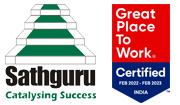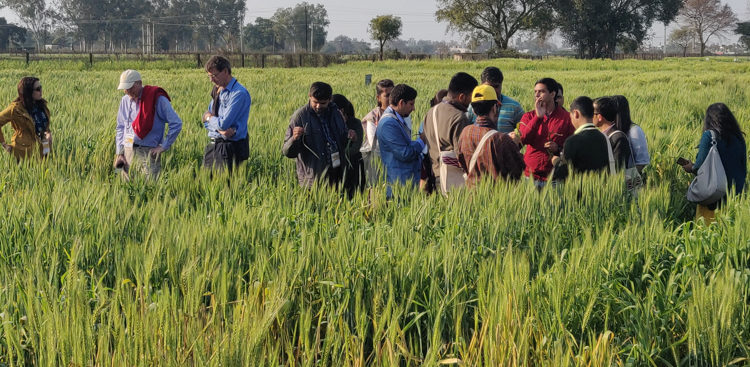Sathguru Management Consultants, India, in association with DRRW (Durable Rust Resistance in Wheat) and NARC (Nepal Agricultural Research Council) is organising the 2015 SAARC Wheat Rust Training Program at Kathmandu and NARC’s Khumaltar research station in Lalitpur from March 16-25, 2015. The programme is the fifth such event held in south Asia, resulting in scientific capacity to deal with the threat of wheat rusts in the region.
“A reddish-brown, windborne fungus known as stem rust re-emerged as a threat to the world’s wheat crop in Uganda in 1998,” said Gordon Cisar, associate director of the DRRW project at Cornell University, USA. “The so-called Ug99 pathogen and its variants have unique virulence to which a large proportion of the world’s wheat varieties lack resistance. Outbreaks of wheat rust pose a threat to global food security.”
As an indication of the international concern regarding this threat to south Asia, the course is drawing participants from Pakistan, Nepal, India, Afghanistan, Bangladesh, Bhutan, Ethiopia, Australia, South Africa, Mexico and the US.
Wheat is the second most important crop after rice in the SAARC (South Asian Association for Regional Cooperation) countries, and is the staple diet in Pakistan and India. In Nepal, yields have increased from 112,000 metric tonne of wheat grown on 100,000 hectare in 1965/66, to 1.9 million metric tonne on 754,00 ha with an average yield of 2,496kg/ha in 2013/14.
Rust pathology, pathogen surveillance, field and laboratory techniques, plant breeding, and statistics will be demonstrated to the participants. They will learn to update global surveillance data using modern information technology tools known as the SAARC Toolbox, a kit that includes a Rust Survey app developed by Sathguru that works on hand-held tablets. The data is fed into each country’s surveillance database, and ultimately into a global Rust Mapper.
Faculty involved in the training includes a team of scientists from the NARC; Robert Park (University of Sydney, Australia); Gordon Cisar (DRRW); Zak Pretorius and Neal McLaren (University of the Free State, South Africa); Dave Hodson (International Maize and Wheat Improvement Center – CIMMYT, Ethiopia); Arun Joshi (CIMMYT, Nepal); and Mohinder Prashar (Mahyco, India); among others.
The DRRW leads 23 universities and research institutions across the globe in reducing vulnerability to stem, yellow and leaf rusts of wheat on behalf of the Borlaug Global Rust Initiative (BGRI), initiated in 2005 by Dr Norman Borlaug. The BGRI works with local farmers to replace susceptible varieties of wheat with agronomically superior varieties through development of rust-resistant varieties.
Using lectures and other materials from the course, multimedia specialists from Cornell University will create an online course on the “Art and Science of Plant Pathology” that will be available to the global wheat community on the BGRI website.
Source: FNB news


